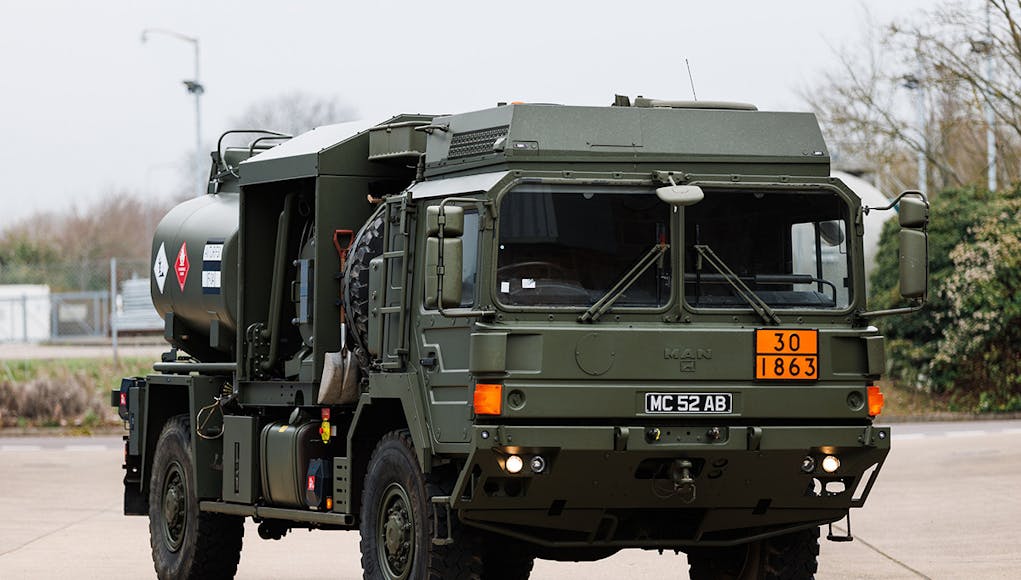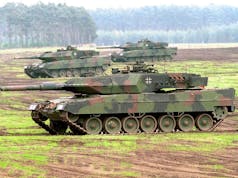Vehicles used to fuel and defuel a range of military helicopters are being upgraded and will support UK Armed Forces for up to 15 more years, according to de&s.
The 5,000l-capacity Small Capacity Aircraft Refuellers (SCARs), which will supply the bulk of the fuel for RAF, Royal Navy and British Army helicopters, including Chinook, Merlin and Apache Mk1, have reached Initial Operating Capability (IOC).
In total 90 SCARs will be delivered through the Small Capacity Aircraft Refueller Life Extension Project (SCAR LEP) with improved deployability, availability and flexibility. This is in addition to a similar improvement and refurbishment project for Large Capacity Aircraft Refueller (LCAR) vehicles announced last this year.
In total the LEP for both SCAR and LCAR will cost around £50m.
“The SCAR project is a collaboration between Defence Equipment and Support, the RAF and an industry consortium led by Terberg DTS UK with Full Operating Capability expected by 2025.
“The Small Capacity Aircraft Refuellers are vitally important to UK military aircraft capability, supporting operational and training outputs. Complementing upgrades to the Large Capacity Aircraft Refueller fleet, these upgrades will ensure SCARs remain able to support UK Armed Forces for up to 15 years.”














We won’t need so many now Schrapps has decided to break up 30 of our precious Typhoons for spares
It says in the article they are for the helicopters however there aren’t enough of those either.
Does seem oddly like a large number considering how many helicopter are left. Must be one of the few capabilities that haven’t been cut past the bone.
They don’t use this type of refuellers at fast jets camps. The decision to retire the T1 Typhoon was made at the 2021 strategic defence review. And has been on the cards well before then.
Exactly. I’m against it myself, but it is not Schapps fault. He could choose to try and reverse the decision, or, more likely, let Labour do it if they’re so amazing for defence as many seem to think.
As for these Tankers, assume the likes of TSW and JHSS are the principal users out in the field in support of the AAC, CHF, and the SHF.
So in tactical field conditions not just trundling around an established station?
Yes mate. That’s exactly what they are used for. Can’t remember the official name foe the airfield tankers. But they are much larger, and usually painted yellow at some RAF stations. Not sure why.
Ah yes, I’ve seen them. No idea either.
Can only think it’s for safety. So they are highly visible on the airfield. Still green back in my Cottesmore and Yeovilton days.
LCAR are the vehicles with the 20,000 litre tank
Maybe I’m going mad but…..50 million for 90 small petrol tankers ? That’s over £500,000 each ! There is no way on this earth that a small petrol tanker costs £555,555 each.
It is the same if you take laboratory equipment. If you have the identical product sold for a kitchen it is 1/3 the price.
The problem is that there will be a number of ‘special’ features…..the program costs will also include lifetime support etc so the numbers appear very, very inflated.
You are not going mad. It is just corruption plain and simple.
You can pick up an second hand eight year old Scania tanker for £100,000..so these are new and look a bit rougher and tougher… so maybe not so way out in price? Scania tankers were, presumably, made in many hundreds, these are, I guess, rather more bespoke, so again we lose out on economies of scale.
A mil spec vehicle is chalk and cheese compared to a civi spec vehicle.
Exactly my point!
My police car wasn’t! 😉
Or rather it was but had distinctly the less investment. As to my then 40ish YO Browning High Power and SMEG, they were pants as well.
Can we move onto the personal kit?
That’s picking up a full new truck though, not just an extended warranty and parts replacement. Agree on economy of scale but 500k each seems insane.
You be surprised how much a new tanker costs.
Its £50m for 80 upgraded large tankers and 90 new smaller (still big) AVGAS/JET-A tankers that are capable of being used off road by the miltary so at least with 4×4, wading capability, steep approach/departure angle capable, decent suspension , air-deployable, proper fuel pumping systems, can take additional armour etc etc, plus the small matter of 15 years of support costs included. I think that basic MAN HX60’s are about £150-200k each so the contract price sounds about right. Very impressive to see even the basic HX flatbeds carrying a load of ISO containers being driven at speed, off-road around the Imber ranges last year…
Are you sure that 15 years of support costs are included? I did not spot that in Press releases.
David, given your surprise, it looks like you have not had much contact with DE&S before!
Also, you did spot that this programme is to upgrade existing tankers (80 large, 90 small) by means of a Life Extension Programme (LEP) and not to buy new ones?
refurbishment/upgraded, so not brand new
They will come back as good as new.
good point, better in some ways I expect
Unlike civilian tankers, I suspect that all these will need to be classed as “pressure vessels” so that they can conform to “maritime” regulations for transportation without the need for degassing. This allows them to be shipped with loaded tanks. This and other mil spec requirements always make them more expensive than civilian types, that don’t need these additional requirements.
I’m just glad they didn’t take the opportunity to utterly hack the numbers back to a bare bones inadequate level, like our beloved Conservative government have done to all defence programmes since they were voted in.
Phew! Bullet dodged for at least 15 years, we all hope.
Bullet Production has also been cut……as have those soldiers who might have once had to Dodge them……. just sayin. 🙄
Better a small force with the enablers it needs to fight, than a large force with no logistical support. Armies fight on their stomachs, or in this case their fuel tanks.
It’s certainly not an excuse for the cuts, but the situation could certainly be worse.
If there’s a small amount, I’m guessing they will start taking them from other airfields that are low priority.
couldn’t we just build new ones?
£50m for 90 fuel bowsers. So £555,000 for a fuel Bowser. Wow… It would appear that the creatures involved in this particular little procurement fraud scam, really do not give a shit for the MOD, let alone British Taxpayers.
Absolutely shocking!